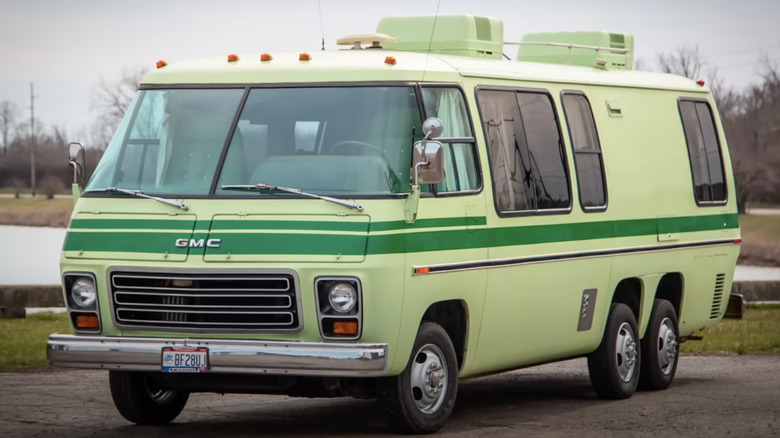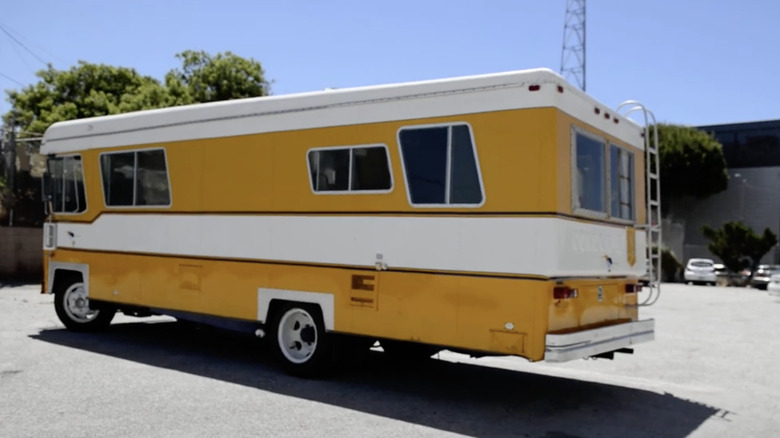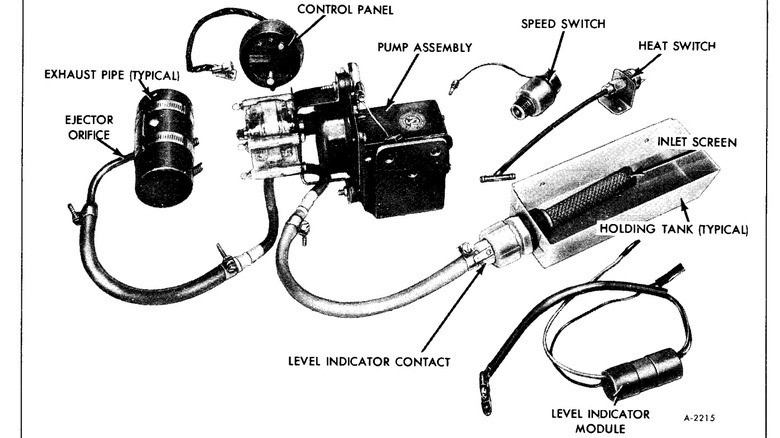The Worst RV Design Idea Of The '70s Involved Shooting Human Waste Out Of The Exhaust
Owners of recreational vehicles — from the most affordable camper vans to some of the coolest camping RVs ever built that cost as much as $2.9 million — have a common problem: how to dispose of black water. This term refers to the waste from RV bathrooms, as opposed to gray water, which comes from washing dishes and showering. Traditional black water disposal requires connecting a hose to the tank to drain it, a sometimes messy and always malodorous process. Many RVers are now opting to equip their rides with composting toilets, which use materials like peat or coconut fiber to help break down solid waste and turn it into environmentally friendly compost.
This technology is available on some newer RVs like the camper with a solar-powered roof that REI and Airstream teamed up on, but converting an existing black tank RV system to a composting one can cost more than $1,000. Decades ago, one company developed a system that would eliminate the need for RV owners to drain their black water tanks, but the details will leave you scratching your head and wondering what they were thinking.
The Thermasan system used exhaust heat to burn waste particles
A company known as the Thetford Corporation developed a system called Thermasan. The word is a portmanteau of "thermal" and "sanitary" that doesn't quite accurately describe what the system does, although we have to give them a B+ for effort. The system was enabled when the RV reached a speed of at least 30 miles per hour and the exhaust components were heated to 900 degrees Fahrenheit or higher.
That would be sufficient to kill any bacteria in the holding tank, and when those conditions were met, a light would illuminate on the Thermasan's dashboard control panel, alerting the driver that it was safe to activate the system. After the driver flipped a switch, an electric pump would begin to feed material from the tank to a point just ahead of the muffler, where a screen filtered out solid waste. This was to keep those particles from clogging the system and being sprayed on the roadway and trailing vehicles.
GMC and Ford used the Thermasan on their RVs
The system was also designed to leave enough liquid in the tank to make it reasonably easy to drain the old-fashioned way, and Thermasan's one teaspoon per second (five gallon per hour) flow rate was supposedly calibrated to ensure that no noticeable waste particles made it onto the roadway or windshield of the car behind you. Although Thetford advertised the system as something that was able to neutralize so-called "odor molecules," The Drive quoted a former employee as saying it emitted a "hot diaper smell" while in operation.
That emission and any other obvious lingering questions about Thermasan didn't prevent RV manufacturers from installing the system, though. It was used on the 1973 GMC Class A Motorhome, which came in 23 and 26 foot lengths. In case that wasn't far enough to isolate driver and passengers from the questionable smell emanating from the rear, Thermasan was also an option on the 1972 Ford Condor II, which measured 28 feet from tip to tail.
In developing the system, Thetford referenced an existing patent from 1932 for a system that atomized pesticides on the exhaust of small aircraft and another from 1953 that macerated and burned waste before ejecting it onto the road. Although the waste was supposed to be disinfected at this point, Thetford saw the glaring flaw in this system and modified their design accordingly.


